What’s Wrong With This Landscape: The Answer
Welcome to the second edition of “AZ Plant Lady Drive By: What’s Wrong With My Landscape”.
Where you able to figure out what was wrong with the landscape, below?
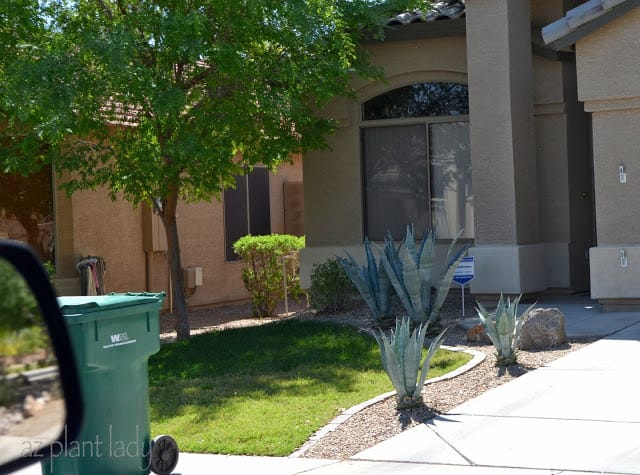
I got some great answers and they were all right, BUT only one person noticed one problem that others hadn’t.
Here are a few of the answers I received on Facebook:
“Huge needle sharp plants next to a walkway.”
“The century plants (agave) need more sun.”
“Agaves planted too close to walkway, tree planted too close to house, poor pruning of Bush between houses. Looks like the Bush was trimmed with a chain saw. The mixture of desert and green landscaping is a bit much.”
These were great comments and were correct, but there was one other problem that only one of my readers found. Here is her comment:
“Those agaves are going to cause a lot of trouble. They will multiply and take over the tiny area they are planted in.”
1. First of all, you should not plant prickly agave near areas where people walk – like along the driveway or an entryway. Getting pricked by an agave hurts – I have had this happen countless times to me while in the field and once or twice at home.
2. The choice of agave in this landscape is a poor one. The agave in this landscape are called Agave americana and are perhaps the most commonly found agave that I see in landscapes.
While these agave are attractive, they do have a characteristic that makes them high-maintenance – they produce lots of baby agave (also called volunteers or pups).
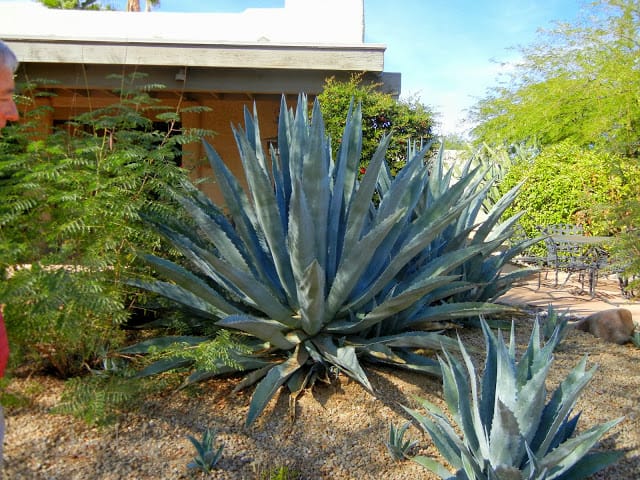
These volunteers are prolific and take a lot of time to cut them out. The agave group, above, started out as one Agave americana that then reproduced. The majority of agave pups were removed, but six still remain.
This homeowner has kept up with removing most of the volunteers – but it is hard work.

Removing the volunteers means getting up close to these prickly agave and it isn’t easy to remove them. You have to get your shovel down into the soil a few inches to cut off the volunteer from the parent plant.
Homeowners usually allow the volunteers to grow, which over time, creates a somewhat unattractive mass of agave. OR they remove them and plant them elsewhere in their landscape, which just increases the problem because those replanted agave babies will start making their own babies.
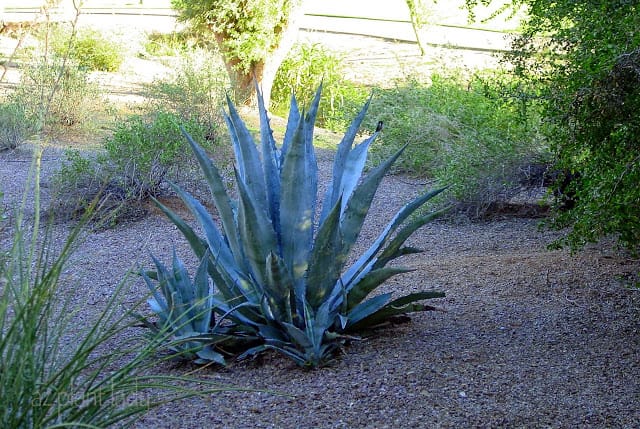
Now, I think Agave americana are beautiful (as does the little hummingbird perched on this one). But, I wouldn’t plant one in my garden.
So, is there a solution for homeowners like me who love how agave look, but don’t want lots of babies to take care of?
Yes!
There are many different species of agave that don’t produce volunteers, or not too many.
Here are a few of my favorites that will make a good substitution for Agave americana:
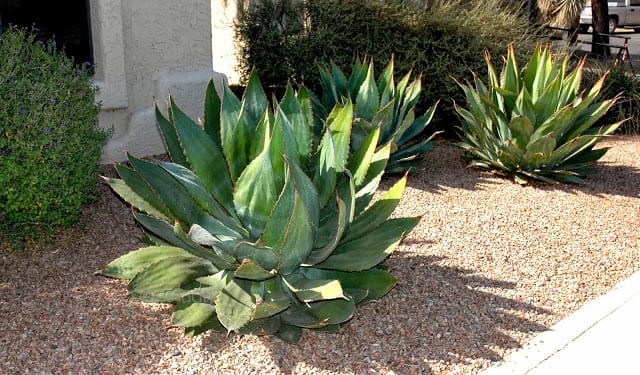
Cow’s Horn Agave (Agave bovicornuta) is a beautiful agave and does not produce any volunteers.
They will grow approximately 4 feet wide and tall. Plant in an area that receives filtered sun or afternoon shade. This agave is hardy to zone 9.
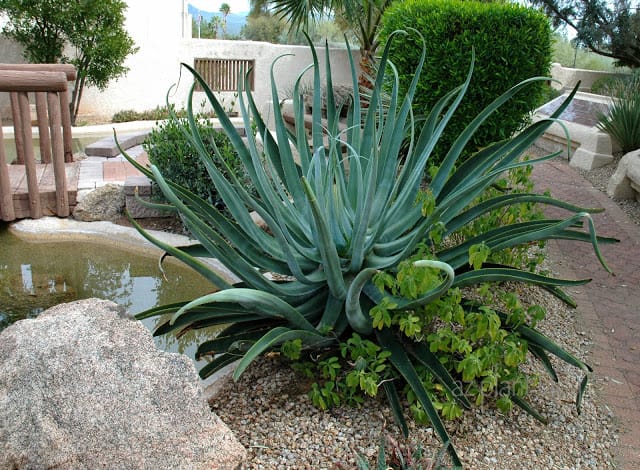
You can see why this agave is called ‘Octopus Agave’ (Agave vilmorniana). It does mimic that tentacles of an octopus.
This agave will not produce volunteers either. It does best in filtered shade or in an area that will receive afternoon shade. Hardy to zone 9.
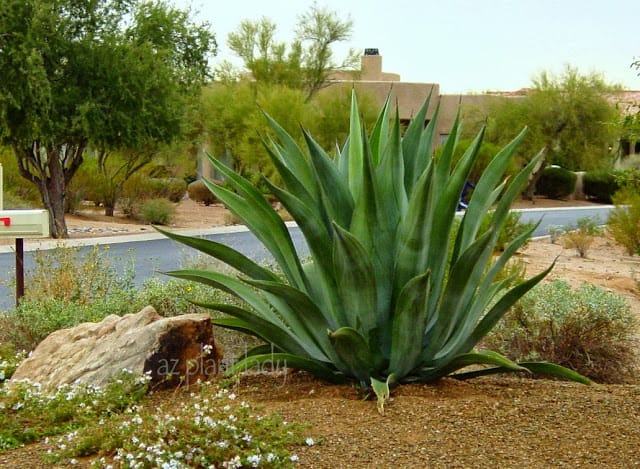
Weber’s Agave (Agave weberi) is my favorite large agave. I am using several in a new landscape area that I designed alongside a golf course.
This agave grow 5 feet tall and 6 – 10 feet wide. I does great in full sun. It does produce the occasional volunteer, but not many. Hardy to zone 7.
I hope you have enjoyed this edition of “AZ Plant Lady Drive By”. Thank you all for your comments. I’ll keep my eyes and camera ready for other “landscape no-no’s” to show you.
My goal is not to poke fun at those homeowners who have made mistakes. I want to help you to avoid making the same mistakes in your own landscape.
**IF YOU HAVE A PHOTO OF A ‘LANDSCAPE NO-NO’, PLEASE FEEL FREE TO SEND IT TO ME AT arizonaplantlady(at)gmail(dot)com
AZ Plant Lady Drive By: What’s Wrong With This Landscape?

 Noelle Johnson, aka, 'AZ Plant Lady' is a author, horticulturist, and landscape consultant who helps people learn how to create, grow, and maintain beautiful desert gardens that thrive in a hot, dry climate. She does this through her consulting services, her online class Desert Gardening 101, and her monthly membership club, Through the Garden Gate. As she likes to tell desert-dwellers, "Gardening in the desert isn't hard, but it is different."
Noelle Johnson, aka, 'AZ Plant Lady' is a author, horticulturist, and landscape consultant who helps people learn how to create, grow, and maintain beautiful desert gardens that thrive in a hot, dry climate. She does this through her consulting services, her online class Desert Gardening 101, and her monthly membership club, Through the Garden Gate. As she likes to tell desert-dwellers, "Gardening in the desert isn't hard, but it is different."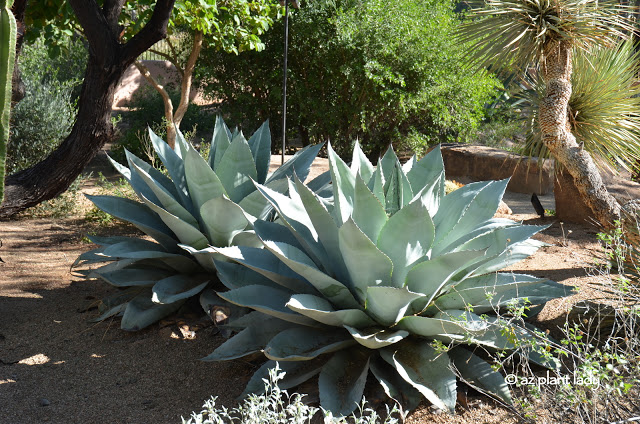
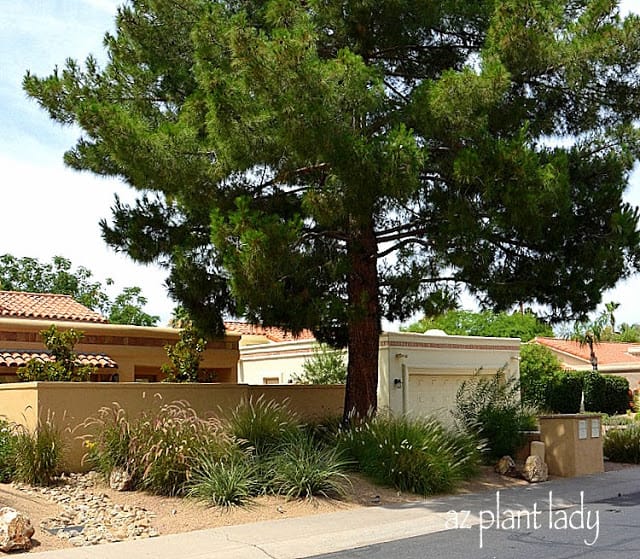
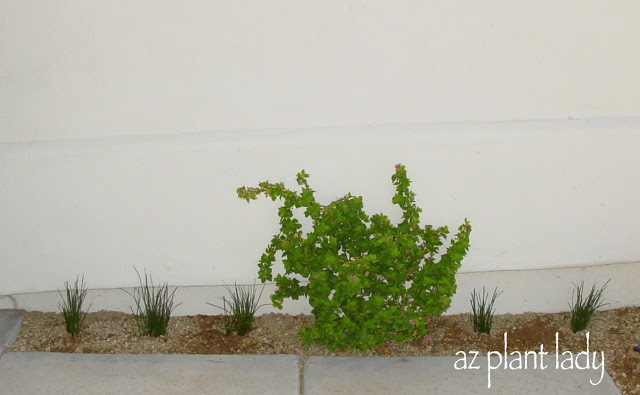
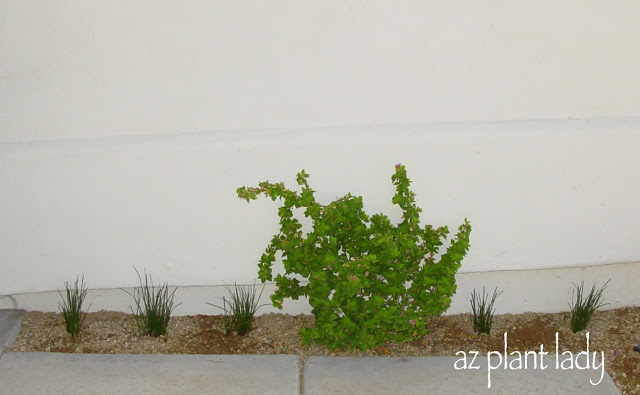
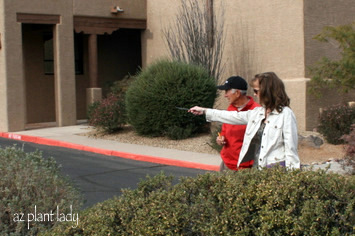
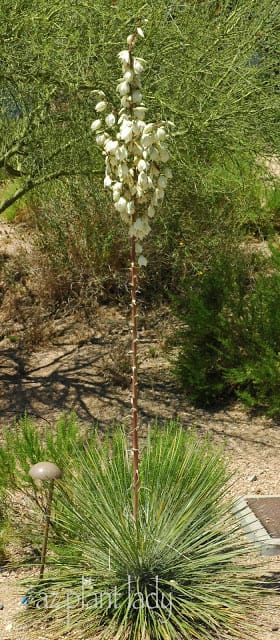








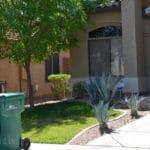

Hm. I see that Weber's Agave is hardy to zone 7. Do you think it would need well-drained soil and a dry climate? Or could it handle clay (and wet winter – and spring – soils) in Middle TN?
Hi Aaron,
Agave do best in well-drained soil. You could probably grow them in a large container, which would take care of the problem of wet soil. I can't speak to how they will do in humid weather. Here is a link for more info about these beautiful agave http://mswn.com/plants/database/plant/agave-weberi/
Thank you so much for your wonderful comments 🙂
Noelle
I love your beautiful agave photos, I love agaves and have at least a dozen kinds around the garden. I would really like to geta cow horn agave.
I actually do have 3 kinds of Americana , two have never sent out offsets but they are in the rock garden with hardly any soil and get no supplemental water. The third kind is in gravel and sent out a two pups in the past 3 years which were easy to remove and pot up. So whatever conditions cause them to pup prolifically does not exist where mine are.
I love your beautiful agave photos, I love agaves and have at least a dozen kinds around the garden. I would really like to geta cow horn agave.
I actually do have 3 kinds of Americana , two have never sent out offsets but they are in the rock garden with hardly any soil and get no supplemental water. The third kind is in gravel and sent out a two pups in the past 3 years which were easy to remove and pot up. So whatever conditions cause them to pup prolifically does not exist where mine are.
Noelle, speaking of things that multiply into unwelcome proportions — you could do an entire post on Parkinsonia aculeata. I personally have somewhat of a vendetta against this tree (aka Mexican Palo Verde or Jerusalem thorn) since they are hard to eradicate and have it out for anyone who comes near with pruners or saw.
I loved this quiz! And you (and your reader) are so right. It makes me crazy when gardeners don't realize what's going to happen down the road. Yes, there are lots of aggressive plants (don't I know it)but agaves are prickly! And when they get too big, it's no fun to get them outta there!
I have A. weberi and it pups quite heavily. In fact all mine came from my neighbor and I have passed them on to another neighbor. I do love them. Then there is the A. ovatifolia which doesn't pup but is such a beauty and A. parryi. I am willing to put up with a few sticks in the skin for the sake of such beauty. I wish there were more hardy agaves. I am leaning more to planting these stunning accents as we move into increasing droughty conditions.
a really good post!!! though the A. Americana is a quite sculptural plant it can rally become a nuissance… Thank's for the great suggestions for other agave types! I quite like the A. atenuata – such a smooth one compared to the ferrocious others… and Agave ovatifolia and Agave macroacantha are beautiful too, I think.
regards
Hi Noelle,
Years ago, someone planted an Agave Americana, it turned out, over (a significant portion of) electrical wires for most of the front yard outdoor lighting. Yes, you know what coming next. When I innocently tried to dig up full grown Agave pups, I disturbed wires which were only 2”-3” below the surface. Today, we sheath wires in hard plastic, or other materials (you would know better than me), and much deeper. Groan, I still need to call the electrician (it’s low voltage, don’t worry.)
Great pups, though. 😀